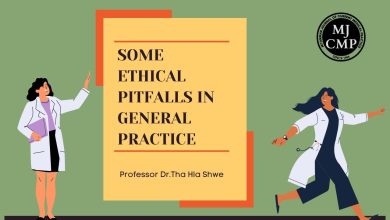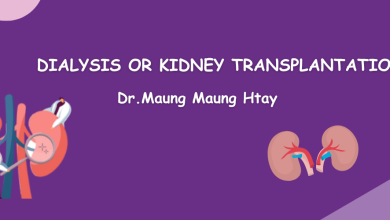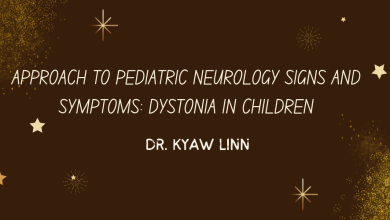Nerve Conduction Study (NCS) and Electromyogram (EMG) in Clinical practice

Background
With greater understanding of the pathophysiology of neuromuscular disorders and advancement in technology, electro-diagnosis by neurophysiology has played an increasingly important role in the clinical evaluation of patients who have neuromuscular disorders. Various neurophysiological tests are used in helping diagnosis and management of a variety of neurological diseases. While electroencephalogram (EEG) (recording of electrical activity produced by the brain) is used in diagnosis and management of central cerebral cortical diseases such as seizures and epilepsy, encephalitis, encephalopathy and coma, nerve conduction study (NCS) and electromyogram (EMG) are used in diagnosis and management of peripheral neurological diseases including motor neuron disease, radiculopathy, plexopathy, peripheral neuropathy (polyneuropathy, mononeuropathy, multiple mononeuropathy), neuromuscular junction disease and myopathy. A type of NCS called repetitive nerve stimulation test (RNS) and a form of EMG called single fiber EMG (sfEMG) are used for diagnosis of neuromuscular junction diseases. Other neurophysiology testing options include visual evoked potentials (VEP), BAEP (brainstem auditory evoked potentials), somatosensory evoked potentials (SSEP), and autonomic function testing (AFT). In this article, we will focus mainly on NCS and EMG.
Technical aspects
NCS measures the nerve conduction parameters (latency, conduction velocity, amplitude) of sensory and motor action potentials evoked by using sticker electrodes and giving small electrical impulses to individual nerve. F wave assesses conduction across the entire motor pathway to the anterior horn cell (AHC). In clinical practice, the most commonly studied nerves are the median, ulnar, peroneal and sural sensory nerves for sensory NCS, and the median, ulnar, peroneal and tibial motor nerves for motor NCS, although other peripheral nerves such as radial motor and sensory in case of wrist drop, medial and lateral antebrachial sensory nerves in case of possible brachial plexopathy, saphenous nerve in case of femoral neuropathy, and cranial nerves and brain stem localization eg. blink reflex can also be assessed. NCS are conventionally performed with EMG studies, typically performed consecutively in order to provide a comprehensive evaluation of suspected neuromuscular impairment.
EMG involves using a very small needle and inserting it into some of the muscles chosen on clinical background. EMG is interpreted from the sound and waves appeared at rest and during voluntary activities of individual muscle such as insertional activities, spontaneous activities and morphology of motor unit potentials (MUPs).
Individual nerves are stimulated repeatedly to assess the fatigability of neuromuscular junction in RNS and sfEMG is to see the jitter (variation in latencies of motor unit potentials of a single motor unit). RNS and sfEMG are useful in diagnosis of neuromuscular junction diseases such as myasthenia gravis and lambert Eaton myasthenic syndrome (LEM).
There is generally no complication associated with NCS/EMG and most patients tolerate the tests well with minor discomfort. Results are given out instantly after the tests. NCS and EMG does not need special preparation except for RNS/sfEMG in which patient must not take pyridostigmine for at least 4 hours before the test to prevent false negative result. There is no contraindication for NCS/EMG but for patients with pacemaker, cardiologist should be informed and pacemaker needs to be checked after NCS/EMG although it is safe. Initial clinical evaluation by neurologist is necessary to decide for the type of neurophysiology test, extent and protocol to do. For interpretation, neurophysiologist or neurologist with special expertise in neurophysiology applies knowledge of detail anatomy and innervation of individual nerve, root and plexus, and anatomy and action of individual musclein combination with procedure expertise and clinical neuromuscular knowledge. In doing NCS/EMG, focused and selective study tailored to necessary sites according to clinical context should be done not to add discomfort, burden and the diagnosis not to be confused with coincidental findings. Few times if early study, single test cannot fulfil the diagnostic criteria, so serial testing at a later point may be necessary for definite diagnosis, eg. Guillain-Barré syndrome (GBS), motor neurone disease (MND).
In diffuse peripheral neuropathies, by looking at detail parameters of action potentials, demyelinating/axonal, length-dependent vs non-length-dependent, symmetrical or asymmetrical peripheral neuropathy can be decided which will subsequently help to work out etiology after combination with clinical context. In focal neuropathies, NCS/EMG study can confirm or rule out the clinical diagnostic impression of neuropathy, decide the distribution such as mononeuropathy (eg. median nerve only), mononeuritis multiplex vs polyneuropathy, locate the exact site of neuropathy (eg. right ulnar neuropathy at 2 cm below elbow, peroneal neuropathy across right fibula neck), evaluate the pathophysiology (demyelinating or axonal), quantify the severity and determine the prognosis. Sometimes, the study can even give etiological clues from the particular pattern and clinical context.
It is also necessary to be able to interpret overlap problems, eg., carpal tunnel syndrome and ulnar entrapment neuropathy superimposed on diabetic distal sensory predominant polyneuropathy rather than generalized demyelinating chronic idiopathic demyelinating polyneuropathy (CIDP). This cannot be possible without clinical knowledge, history taking and examination of the patient by the neurophysiologist.
Differentiating axonal and demyelinating subtypes in diffuse polyneuropathies
In a case of symmetrical acute flaccid quadriparesis less than 28 days without concurrent infection, after NCS confirming peripheral neuropathy, the diagnosis is most likely GBS. NCS and F waves findings will subdivide GBS into AIDP (acute inflammatory demyelinating polyneuropathy), AMAN (acute motor axonal neuropathy) and AMSAN (acute motor and sensory axonal neuropathy) subtypes. Similarly, in peripheral neuropathy with chronic flaccid quadriparesis, NCS not only confirms peripheral neuropathy but also classifies it into axonal and demyelinating form. In the latter, it will also characterize the pattern of demyelination or dysmyelination, providing etiological clues (i.e., acquired inflammation or inherited dysmyelination) by looking at non-uniform or uniform conduction slowing in NCS respectively. If acquired demyelinating is concluded from NCS, it has few differentials for etiology such as paraproteinemia or chronic idiopathic demyelinating polyneuropathy (CIDP), so it will guide towards testing paraprotein or myeloma panel for the former, and if negative, the diagnosis is CIDP. Axonal neuropathy typically causes predominantly decreased compound motor action potential (CMAP) amplitude whereas demyelinating neuropathy results in combinations of prolonged distal latency, slowing of conduction velocity (CV), conduction block, temporal dispersion and delayed F waves.1
Differentiating focal neuropathies from segmental neuropathies such as radiculopathies and plexopathies
NCS and EMG together help to differentiate focal neuropathy from segmental neuropathy eg., median neuropathy versus C6 radiculopathy or upper trunk /lateral cord brachial plexopathy in a patient with lateral fingers numbness, radial neuropathy versus C7 radiculopathy in a patient with wrist drop, peroneal neuropathy versus L5 radiculopathy in a patient with dorsum of foot numbness or foot drop, sciatic neuropathy versus S1 radiculopathy in a patient with sole numbness.
In a patient with sensory symptoms of lateral fingers, NCS and EMG can confirm the diagnosis of carpal tunnel syndrome (CTS) (entrapment median neuropathy at wrist) by finding significant delay in sensory latencies+ distal motor latencies of median nerve according to electrodiagnostic criteria of CTS whileruling out C6 radiculopathy and upper trunk or lateral cord brachial plexopathy.2 In addition, NCS can also assess the severity of CTS as mild, moderate and severe, for which treatments will be giving advices to avoid repetitive wrist movements, wrist splinting and surgical decompression respectively according to severity of NCS.
In a patient with ulnar side fingers’ numbness, NCS and EMG can differentiate ulnar neuropathy from C8-T1 radiculopathy and lower trunk or medial cord brachial plexopathy. After confirming ulnar neuropathy, severity can be assessed, and exact entrapment site can be localized by inching method of NCS and EMG. Depending on localization of entrapment and severity, advices on conservative measures, elbow extension splinting etc. can be given and clinician can decide the need for surgical release.
In a patient presenting with wrist drop, NCS can diagnose radial neuropathy, differentiate it from cervical radiculopathy, localize the site of entrapment such as across the spiral groove by seeing conduction slowing or conduction block at the site of entrapment, assess the severity (mild, moderate or severe) and whether there is underlying hereditary neuropathy with liability to pressure palsies (HNPP). In the latter case, NCS can also identify other clinically silent entrapment neuropathies as well as detect prolonged distal motor latencies of HNPP.
NCS/EMG in cases of predominant motor weakness
In a patient with proximal weakness without sensory impairment, NCS and EMG can differentiate myopathy, CIDP, plexopathy or upper motor neuron lesion. Even in myopathy, without expensive genetic test, finding of characteristic dive-bomber myotonic discharges in EMG is diagnostic of myotonic dystrophy in the clinical context of family history of autosomal dominant inheritance pattern, chronicity, bilateral ptosis, frontal balding, temporalis, masseter and sternomastoid muscles wasting, distal predominant weakness and percussion or grip myotonia.
Electrodiagnostic testing is also essential in the diagnosis of suspected motor neurone disease (MND) or amyotrophic lateral sclerosis (ALS). An adult patient with asymmetrical rapidly progressive weakness and wasting and/or bulbar palsy without sensory and sphincter involvement, MND/ALS is diagnosed by mixed UMN and LMN signs in at least 3 regions/segments (bulbar, cervical, thoracic, lumbosacral). NCS and EMG are essential to support the diagnosis by detecting active denervation and chronic reinnervation in clinically subtle regions to prove LMN involvement and to rule out treatable mimics of MND.3
Role of neurophysiology in traumatic nerve injuries
NCS and EMG also play a key role in peripheral nerve injuries by identify the injured nerve, diagnosing type of the lesion, site, severity and prognosticate by showing nerve continuity is intact or not, and subsequently help in decision of conservative treatment, direct repair, nerve grafting, nerve or tendon transfer for unrestorable cases. In addition, intraoperative neurophysiology can instantly detect the impending nerve injury and prevent surgical damage.
Limitations
Limitations of NCS is inability to access small fibers since it can be checked only on large myelinated peripheral nerve fibers. NCS is a must before each and every EMG although NCS can be done with or without EMG because doing EMG alone without NCS can lead to missed information misleading the diagnosis. Similarly, in some cases, utilizing only NCS without EMG provides incomplete diagnostic information, leading to inadequate or inappropriate therapy.4 Sometimes, NCS/EMG without other clinical information is non-specific. For example, myopathic changes can be seen in any myopathy such as any myositis and any muscular dystrophy. Of note, EMG can be normal in type 2 fiber myopathy such as steroid induced myopathy.5
Take home messages
Electrodiagnostic testing (NCS/EMG) greatly help with clinical decision-making in neurological disorders. It not only confirms the clinical diagnosis, but also excludes differential diagnosis and assesses severity, helps prognosticate, guides management. But it should be guided by the clinical information from history taking and physical examination by a neurophysiologist.
References
- Lewis RA, Sumner AJ, Brown MJ and Asbury AK. Multifocal demyelinatingneuropathy with persistent conduction block. Neurology (NY).1982:32: 958-964.
- Basiri K, Katirji B. Practical approach to electrodiagnosis of the carpal tunnel syndrome: A review. Adv Biomed Res. 2015 Feb 17;4:50.
- Joyce NC, Carter GT. Electrodiagnosis in persons with amyotrophic lateral sclerosis. PM R. 2013 May;5(5 Suppl):S89-95.
- AANEM. Proper Performance and Interpretation of Electrodiagnostic Studies. [Corrected]. Muscle Nerve. 2015 Mar;51(3):468-71.
- Paganoni S, Amato A. Electrodiagnostic evaluation of myopathies. Phys Med RehabilClin N Am. 2013 Feb;24(1):193-207.

Author Information
Ohnmar1, Khine Yee Mon2,Mya San Aye3, Khin Nyo4, Kyaw Htoo Naing5, Win Min Thit6
- Associate Professor, Department of Neurology, University of Medicine 1
- Lecturer, Department of Neurology, University of Medicine 1
- Neurophysiology technician, Department of Neurology, Yangon General Hospital
- Nurse technician, Neurophysiology department, Aryu International Hospital
- Chief Medical Officer, Central clinic
- Professor/Senior consultant Neurologist, Asia Royal Hospital






